Ten years ago the shaky video of a dehydrated, wildfire-damaged koala captured headlines and the world’s attention.
Crouched next to a charred tree trunk, a volunteer firefighter named David Tree gingerly poured bottled water into the open mouth of the burned koala. A tiny gray paw rested in his own large, calloused hand, allowing the animal to remain upright as she drank.
The young koala, later nicknamed “Sam,” quickly became the iconic emblem of the fires — the first stages of what would be known as the Black Saturday bushfires that burned through the forests of southeastern Australia in February 2009. The fires occurred during a massive heatwave. They burned more than 1.1 million acres, killed 180 people, and caused more than 1 million animal fatalities.
Sam, who was lucky to survive, received treatment at a nearby wildlife center for second-degree burns.
Unfortunately she didn’t last long. Veterinarians soon discovered she was also suffering from severe cysts caused by inoperable chlamydia, one of a few diseases plaguing wild koalas. With no other options, Sam was euthanized that August.
Today her remains reside at the Melbourne Museum, where she serves as a symbol of not only the bushfires but the multitude of threats facing Australia’s wild koalas.
Those threats have taken a terrible toll on koalas (Phascolarctos cinereus), which once numbered in the millions. This May the nonprofit Australian Koala Foundation announced that the marsupials’ wild populations have fallen below 80,000 individuals and the species may now be “functionally extinct.”
In this case “functionally extinct” means that populations have been reduced so drastically that the animals no longer play a significant role in the ecosystem.
The news made headlines, but other biologists countered that while koalas have declined tremendously, the Australian endemics have not yet reached functional extinction. Regardless, koalas are indeed facing a whammy of threats in the country, and without serious and timely intervention it might not be long before the marsupial goes the way of another famous Australian animal, the extinct Tasmanian tiger.
But even as the koala’s decline continues, many people are stepping up to help — and what they’re learning may help the species survive the newest threat from climate change.
A History of Decline, an Uncertain Future
The koala was once ubiquitous in eastern Australia, ranging from tall eucalyptus forests to low woodlands and coastal islands.
Even today “they cover a huge geographic range,” says Christine Hosking, a koala biologist at the University of Queensland’s Global Change Institute. Indeed koalas can still be found in all four of the country’s six eastern states, although their remaining habitats have shrunk and become fragmented from each other, and many sites hold increasingly few animals.
“Population sizes vary from place to place,” Hosking says. “That’s why you can’t come up with a statement saying they’re all functionally extinct. However, some pockets aren’t doing so well.”
The decline was a long time coming. The fur trade was the first to decimate the koala population. Between 1890 and 1927, more than 8 million pelts were exported to England, according to research compiled by the Australian Koala Foundation.
Habitat loss followed. Eucalyptus groves were bulldozed for suburbs. People moved in. If the koalas weren’t killed by cars when crossing roads, they’d be found dangling in the jaws of pet dogs.
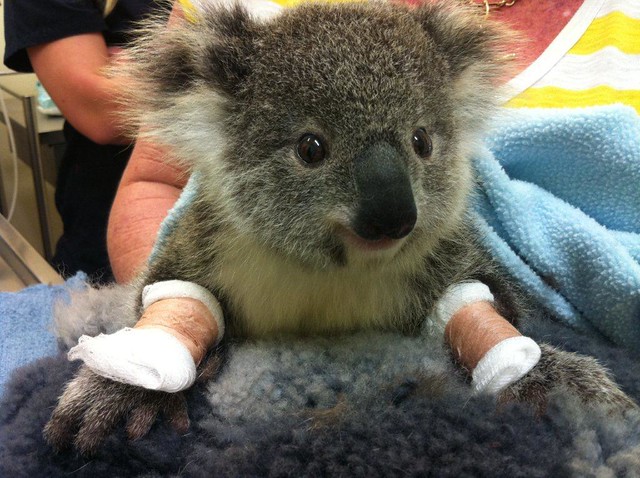
Then came chlamydia, thought to have crossed over to koalas from imported sheep and cattle. The marsupials are keenly susceptible to the sexually transmitted disease, especially when stressed by other factors. In some areas more than 50 percent of koalas exhibit symptoms, which can often prove fatal in its late stages. Climate change and heat stress, therefore, are only the latest in a series of unfortunate events for the vulnerable koala.
Hosking conducts scientific models to understand how climate change has and will affect the koala’s range. She’s found that koalas, already facing reduced and fragmented habitats, will likely now move eastward to the coast, which has a more moderate climate compared to the inland areas increasingly experiencing extreme heat and drought.
“The farther you go inland, there’s already evidence of koala populations crashing by as much as 80 percent,” she explains.
Koalas, it turns out, can’t handle the heat. “We did some modeling on the thermoregulation of koalas and found that over 37 degrees Celsius (98.6 degrees Fahrenheit) seems to be about their threshold.” As the climate changes, Australia frequently experiences 10 days in a row of 45 degrees Celsius (113 degrees Fahrenheit). “They’re not coping with that at all. There’s heat stress, lack of water, and their food trees are drying out,” says Hosking.
But moving east also means moving into more urbanized areas. That’s why scientists are hoping to mitigate this migration, using new tools to save the species.
Drink Up
Koalas get most of their moisture from eating juicy eucalyptus leaves, but they’re limited by how much they can eat.
“Not only are these leaves not particularly nutritious, they’re full of toxins,” explains Valentina Mella, a researcher at the University of Sydney. Koalas have developed a specialized intestinal tract to deal with the toxins, but, they have to wait until they’ve digested the toxins before eating more. “If you’re thirsty and there’s no water, it’s not as simple as, ‘I’ll just have another bunch of leaves.’ ”
Can human assistance help koalas get past that biological limitation? In 2016 Mella and her team placed 10 pairs of drinking stations across the Liverpool Plains in New South Wales, an area where koalas hadn’t been doing well. They wanted to see if the marsupials would supplement their all-leaf-diet with water found in tanks on the ground and in trees. To her surprise, when presented with the opportunity, the koalas were enthusiastic drinkers. Mella documented more than 600 visits by koalas during the course of a year. Other species such as sugar gliders, brushtail possums, kangaroos and echidnas also took advantage of the tanks. During hot and dry periods, the koalas chugged down even more.
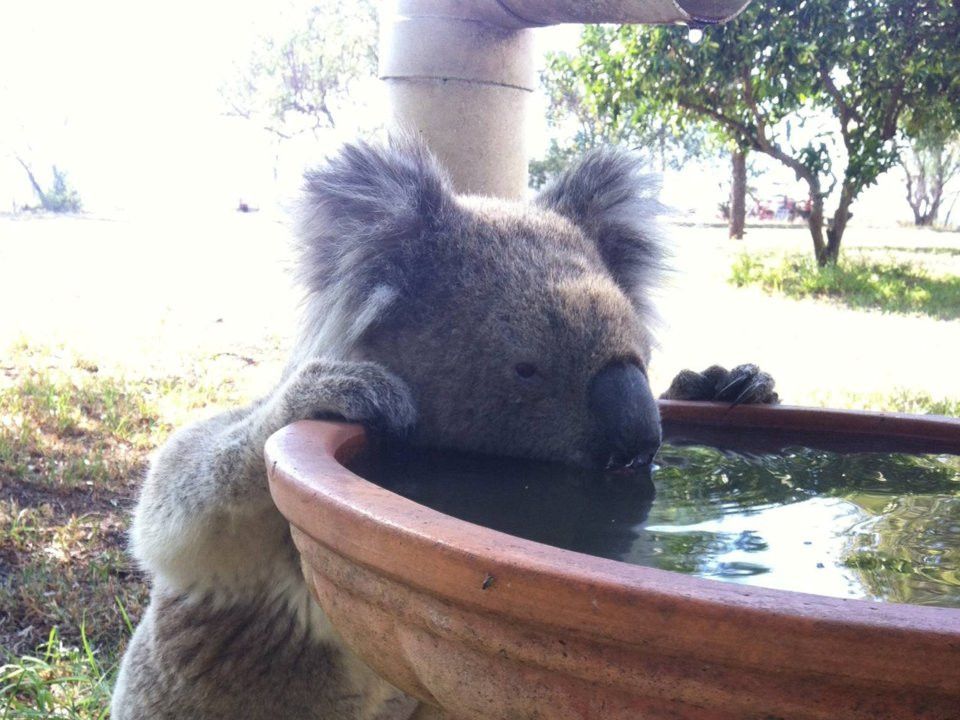
This gives Mella hope that conservationists might be able to help the species by maintaining water stations in the wild for koalas — something that’s already done in rangeland for domestic cattle. Based on this research, the New South Wales government has already adopted water stations as a strategy to assist koalas during heatwaves and droughts.
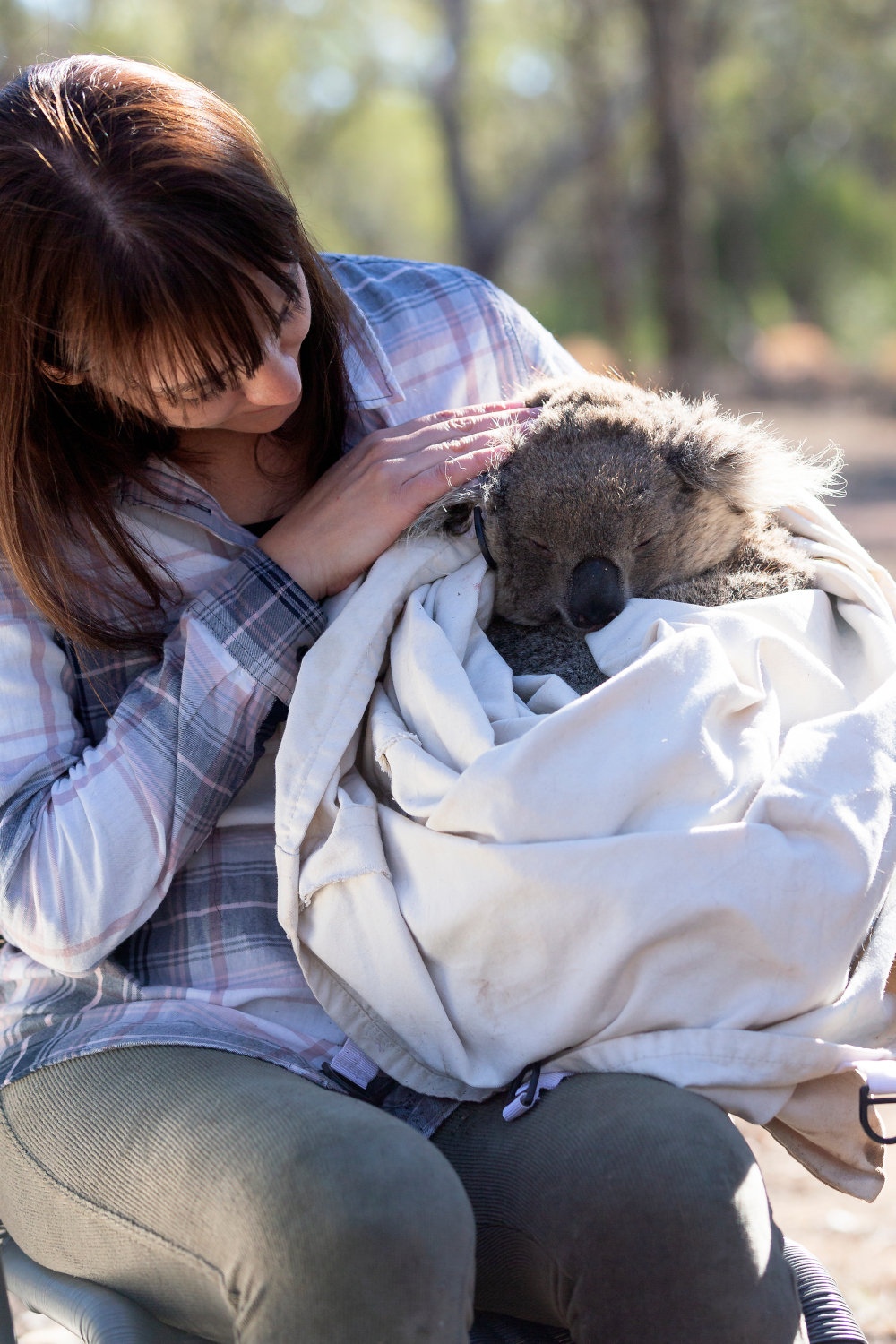
The next step, Mella says, will be to assess exactly how the water stations affect the overall health and survival of koalas.
“On the properties where we have these stations, we check on the ‘regular drinkers’ every six months. So far, they seem to be okay,” she says. But that’s just in terms of heat and dehydration. “When you add in the disease situation, then it’s a whole different story. Water is not a medicine. It can’t cure. But it probably helps in terms of making the animal more healthy to fight the infection.”
Medicine for Marsupials
To help koalas battling disease, dog bites, and automobile collisions, koala hospitals still play an essential role.
At the Port Macquarie Koala Hospital in New South Wales, about 200 koalas pass through the facility every year. That’s down from around 300 in previous years. “There are just fewer koalas now,” says Cheyne Flanagan, clinical director at the hospital.
Of the koalas that come in with chlamydia, about 40 percent are euthanized due to severe damage to their urogenital tracts. The other 60 percent can be treated with antibiotics or surgery. In addition to affecting internal organs, chlamydia also affects koalas’ eyes, causing infections or an overgrowth of tissue.
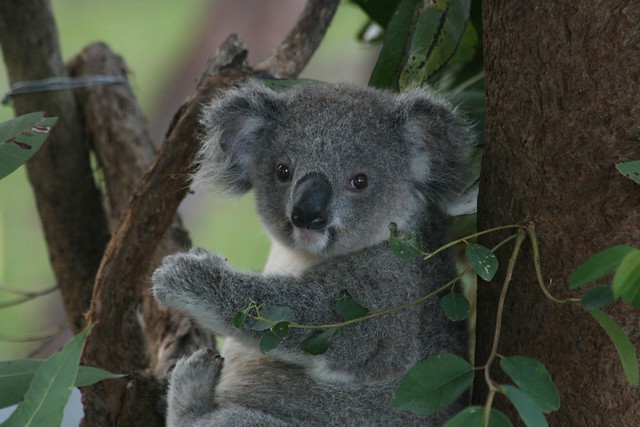
“We’ve made progress,” says Flanagan. “It’s definitely better than it used to be because a lot of research is going on. We’ve learned what drugs are knocking chlamydia down. You can never cure chlamydia… but you can put it in remission and sometimes, if the koalas are healthy enough, their own immune system kicks in and keeps it under control.”
Antibiotic treatment has been problematic in the past because it often kills the gut microbes that allow koalas to eat eucalyptus leaves. But scientists have recently discovered one particular protective microbe that, if kept alive, allows the koala to survive the course of antibiotics. Researchers are also working on alternative treatments, such as fecal transplants, probiotics and a chlamydia vaccine.
Yet pressure on state and federal government from the international community, Flanagan says, is still critical. “Some of the laws for biodiversity in this country are disgusting.”
Australia’s Federal Failure, a Local Opportunity
Before the federal election in May, koala conservationists had hoped to turn the tide after decades of apparent governmental neglect.
In its press release ahead of the vote, the Australian Koala Foundation wrote that it had spent 31 years working with “13 environment ministers, many of which could be described as the ‘Who’s Who’ of the political elite and nothing has happened except dead koalas in the wild… No one has written anything to protect the koala in the last six years of government.” A national recovery plan, mandated by law, has never been established. Notably, Australia’s Department of Environment and Energy web page for koalas still says, as of this writing, that the planned publication date of a recovery plan for the species “is expected to be late 2014.”
Further federal progress seems unlikely. On May 18 Australian citizens re-elected the Liberal-National Coalition, notorious for its refusal to sharply reduce carbon emissions and coal. Opposing parties had made far bolder promises on addressing climate change.
Though the federal election was a disappointment to most environmentalists, Hosking notes it’s now up to local and state governments to play the bigger roles in koala conservation.
“There’s a lot of lobbying going on with local government,” she says. “And we’re trying to engage more with state-level governments right now to come up with strategies to protect the koalas. It’s a matter of keeping populations viable, allowing them to move safely and stay healthy. It’s really difficult. It’s gloomy. But it’s certainly not over.”
![]()

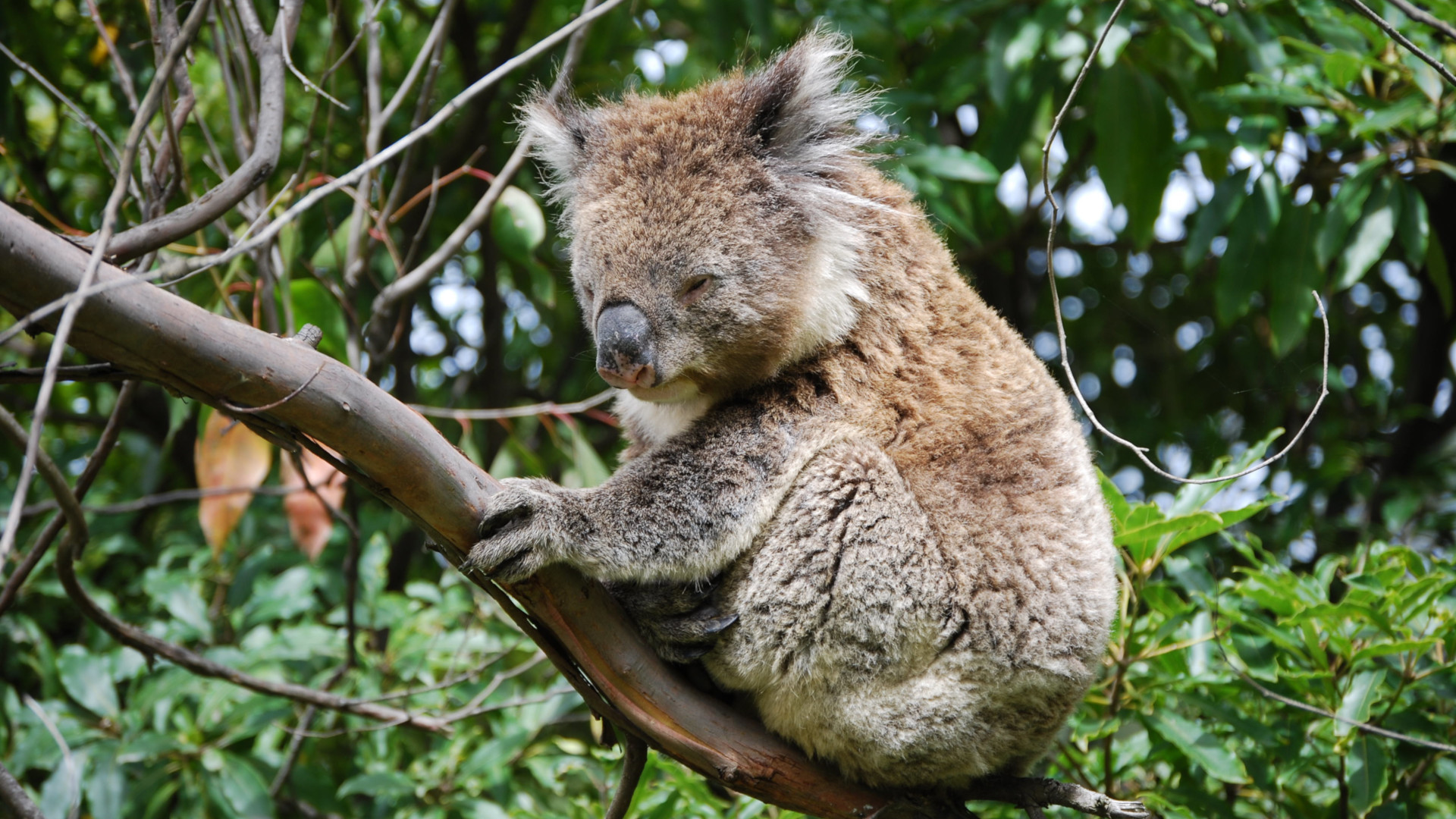
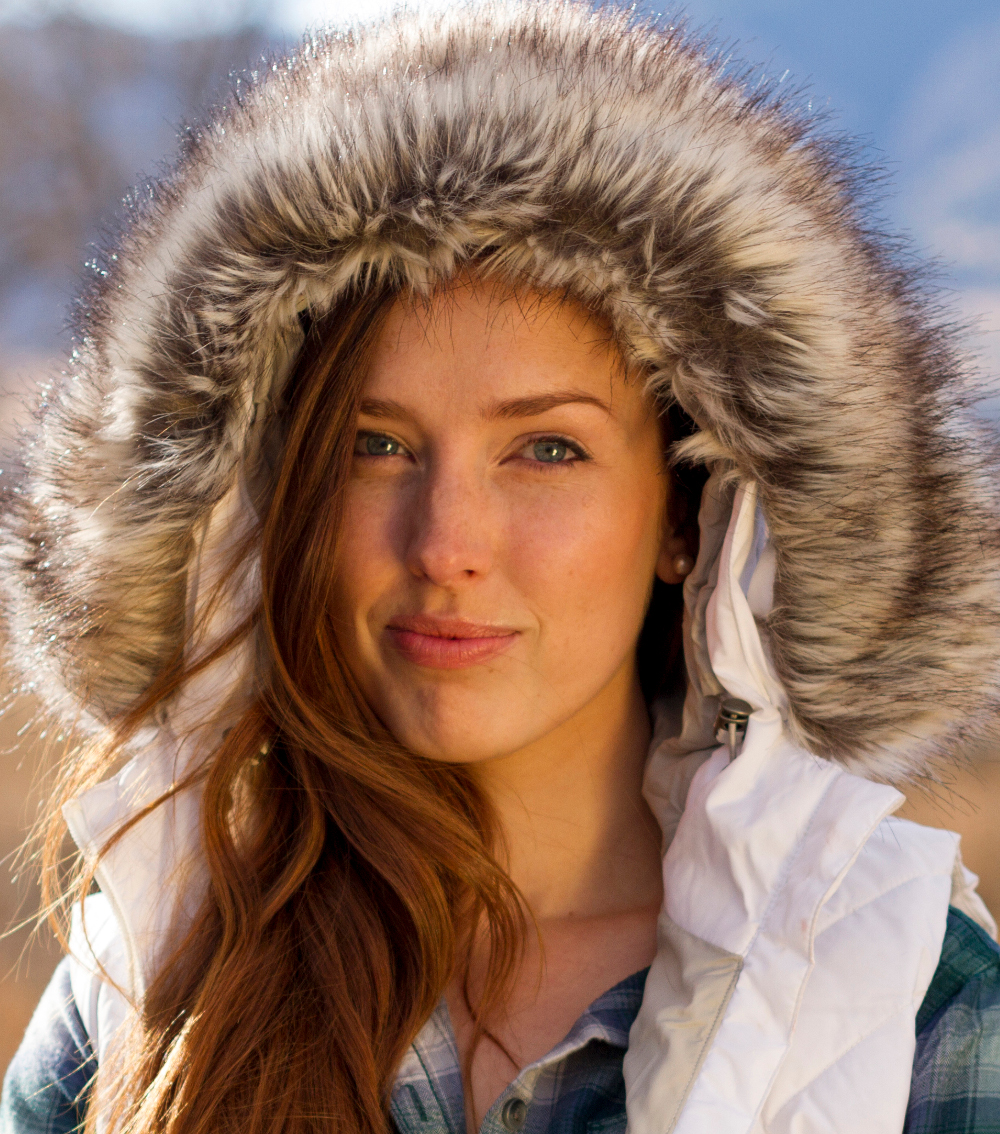
1 thought on “Koalas on the Decline — Dangerous New Threats, Emerging Solutions”
Comments are closed.